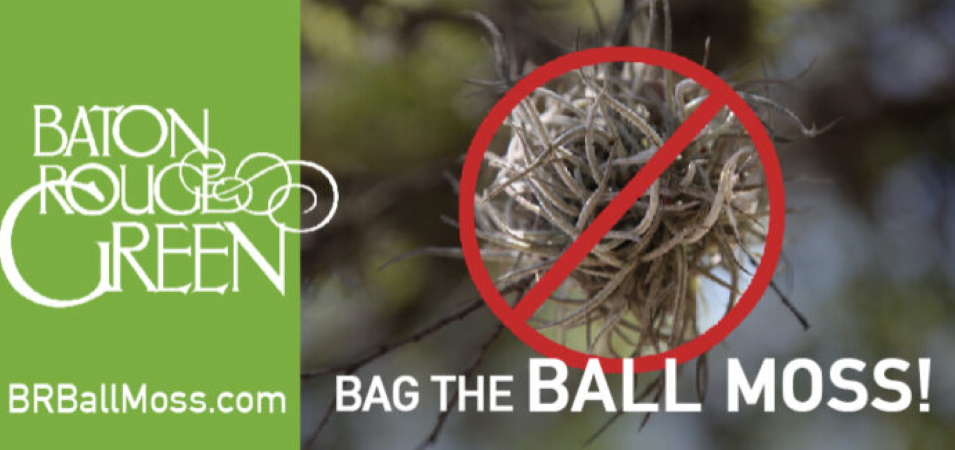Invading plant makes return to Baton Rouge trees, officials urge locals to get rid of it
BATON ROUGE - A plant that crept into the Capital area years ago and began taking over trees that were once covered in Spanish moss has once again emerged in Baton Rouge.
In 2018, WBRZ's Sydney Kern spoke with local officials regarding the invading species, called Ball moss.
>Click here to view Sydney's original story<
“It was first introduced about 50 some years ago, but now it’s colonizing everywhere,” said Director of the LSU Plant Diagnostics Center, Dr. Raj Singh. “It’s displacing the Spanish moss.”
Ball moss is native to Texas and Florida, and Singh said it made its Baton Rouge debut with appearances on LSU campus.
“We don't know if it was accidentally or intentionally brought to LSU campus,” said Singh.
Singh explained that Ball moss can attach to magnolias, crape myrtles and live oaks; even on the outside of buildings.
Trending News
“It can prepare it’s own food. It’s using the pseudo roots to attach to a surface,” said Singh.
The problem is it’s causing some trees to lose their limbs.
“When it rains it gets heavy. [The ball moss] soaks up all the water, and all the branches that were colonized by it, they will break off and fall on the ground,” said Singh.
Singh says ball moss is not a parasite, nor pathogen. But it's easy to see how it takes over a tree. Branches without ball moss on it have a ton of leaves. Branches with ball moss on it don't have any new leaves.
“When there is no new growth that area is kind of dying back or declining, and it is not able to support the roots,” said Singh.
Singh says there are some ways to maintain the plant.
“Start picking it,” suggested Singh. “It's labor intensive but, if you see new plants on a tree, start picking it."
The Plant Diagnostics Center has also learned a mixture of baking soda and water will kill ball moss.
More recently, billboards around Baton Rouge are warning that steps should be taken to remove Ball moss from one's property.

Apparently, there are four ways this can be accomplished.
According to Baton Rouge Green, the following methods are effective:
1. Physical removal by hand.
In minor infestations, hand removal (a.k.a. mechanical removal) is best. A focused stream spray, from a standard garden hose, may also assist with this. (Caution: The use of a pressure washer will damage the bark and cause significant injury if used incorrectly).
There are two crucial things to remember in the case of attempting hand removal.
One: SAFETY FIRST. Using ladders near trees is VERY DANGEROUS. We recommend using a tree service pro, rather than attempting this. But if you must, have a partner with you. Do not climb a ladder without a partner nearby to assist.
Two: BAG THE BALL MOSS before discarding it. Because it is spread through the air, removing it without bagging it and tying up the bag carefully can lead to further spreading, either from your property on en route to trash facilities.
Removal of dead tree limbs after the ball moss has been discarded is also recommended.
2. Baking Soda Solution treatment.
A solution of baking soda and water can be applied that can desiccate the ball moss and ultimately kill it.
A homeowner can make their own baking soda solution in a smaller spray bottle, but the tank must be constantly shaken to maintain the solution. Also keep in mind that the baking soda solution when sprayed can leave behind a white residue on cars and nearby surfaces.
The suggested mixture for the solution is one half pound of baking soda per one gallon of water, or for larger treatments, five pounds of baking soda to 10 gallons of water. The best time to treat ball moss with baking soda is late winter to early spring (before spring rains start), when the trees are mostly bare.
When treating more than one or two small trees, the difficulty with this method is the volume of solution needed, and that the liquid requires a mechanical agitator to keep the baking soda dissolved into the water solution. This cannot be done by a typical spray rig or pesticide applicator and can cause damaged equipment when the baking soda settles and clogs or damages sprayers. We recommend calling a professional, licensed and certified arborist if you would like to treat several/large trees.
It can take some time for weather and wind to knock dead epiphytes off the tree. Homeowners may help this process along by spraying off the dead remnants with a garden hose spray nozzle.
The baking soda is non-toxic and typically not harmful to plants, animals or the environment. Spraying this solution can also be used in conjunction with manual removal.
3. Tree removal by a licensed, certified and insured arborist (see below to search for arborists).
In some extreme cases, an arborist may recommend removal of a very infested tree. This is a worst-case scenario for very sickly, declining trees.
4. Copper Fungicide applied by a licensed, certified and insured arborist or professional chemical applicator.
Some people have found this method to be effective, but excessive use of a copper-containing product can damage the host plant (tree). This is why a trained arborist should be consulted in the application of this method.


